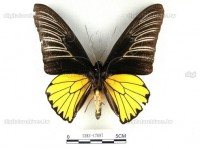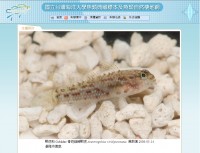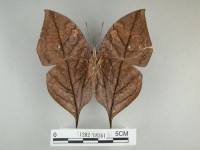 |
| Articles on fauna, flora, and geology. |
|
|

The Formosan Clouded Leopard (Neofelis nebulosa brachyura) started appearing in written records as early as the 1860s, but it is unknown if the species can still be found on the island today. Named for its distinctive, cloud-like spots, the Formosan Clouded Leopard has a tawny coat and is slight shorter than other Southeast Asian Clouded Leopards. With a body length of 60-100, it has a tail of almost equal size (50-90 cm). This carnivorous animal mainly lives on macaques and cloven-hoofed animals, occasionally feeding on small game such as squirrels and pheasants. The Formosan Clouded Leopard was once found in the south and in the eastern mountain areas of Taiwan, typically inhabiting natural broad-leaved forests at an elevation of less than 2000 meters. However, it has not been seen in the wild since the 1980’s. The clouded leopard on display at the Taipei Zoo is a subspecies from the Indochinese Peninsula.
|
|
Read more...
|
|
|
The Leopard Cat – Small Felines of the Mountains |
|
 Once common in Taiwan, Leopard Cats are very similar in appearance to domesticated housecats. They are nocturnal, active mainly in the early morning and at dusk. Living solitary lives, the Leopard Cat only becomes social during breeding season. They make their homes in forests and shrubberies, and unlike their water-shy domesticated cousins, the Leopard Cats like to be near water. Instead of biting into its prey like the African big cats, the Leopard Cats hold them down with its powerful forelimbs or strikes the prey dead with its paws, just like domestic cats. Leopard cats mainly feed on rodents and juvenile artiodactyls, as well as hares, birds, snakes, frogs, lizards, fish, and insects, among others.
Once common in Taiwan, Leopard Cats are very similar in appearance to domesticated housecats. They are nocturnal, active mainly in the early morning and at dusk. Living solitary lives, the Leopard Cat only becomes social during breeding season. They make their homes in forests and shrubberies, and unlike their water-shy domesticated cousins, the Leopard Cats like to be near water. Instead of biting into its prey like the African big cats, the Leopard Cats hold them down with its powerful forelimbs or strikes the prey dead with its paws, just like domestic cats. Leopard cats mainly feed on rodents and juvenile artiodactyls, as well as hares, birds, snakes, frogs, lizards, fish, and insects, among others.
|
|
Read more...
|
|
Endemic Insects in Pongso No Tao (Lan Yu) |

Magellan birdwing butterfly (Troides magellanus(C. & R. Felder)) is one of the largest butterflies in Taiwan, the Kingdom of Butterflies. Wingspan of a female Magellan birdwing butterfly is as long as 15 center meters and as wide as 10 center meters. This species is found only in Lanyu (Orchid Island) of Taiwan. Its fore wings are black while the hind wings are golden. Hind wings of a male reveal red, green, and blue iridescence when viewed from certain angles. Magellan birdwing butterfly goes through complete metamorphosis. Its larva is colorful and feeds on Zollinger Dutchmanspipe. Its pupa is pupa adhaerena which hangs from a branch. Magellan birdwing butterfly is most active from March to April and from September to October. Its major nectar plant is Odollam Erberus tree. Comparing with other butterfly species, it flies relatively slow with a speed of four to five kilometers an hour. Due to depopulation of Zollinger Dutchmanspipe caused by farm land reclamation and over-collecting for its beautiful wings, the number of Magellan birdwing butterfly is in steep decline.
|
|
Read more...
|
|
|
Find Something New--Adventures in Fish Specimen Collection |
|
 Fishes, fishes swimming in the sea,” so goes the familiar tune that we’ve hummed countless times through our childhoods. Children eventually grow up, but this simple rhyme is sure to resonate in their minds whenever they walk down a riverbank or swim in the blue seas. But do they really know the multitudes of fish that live in our rivers and oceans? Can they identify fishes by name? What do they know about their behavior? Aiming to improve knowledge among the general public of fishes and their habitats, National Taiwan Ocean University has devoted much effort to building an internet database of fish specimens and natural habitats. They hope to aggregate all available information about fish from Taiwan and southeast Asia.
Fishes, fishes swimming in the sea,” so goes the familiar tune that we’ve hummed countless times through our childhoods. Children eventually grow up, but this simple rhyme is sure to resonate in their minds whenever they walk down a riverbank or swim in the blue seas. But do they really know the multitudes of fish that live in our rivers and oceans? Can they identify fishes by name? What do they know about their behavior? Aiming to improve knowledge among the general public of fishes and their habitats, National Taiwan Ocean University has devoted much effort to building an internet database of fish specimens and natural habitats. They hope to aggregate all available information about fish from Taiwan and southeast Asia.
|
|
Read more...
|
|
Butterflies of Formosa - Details |
|
 Mimesis is when some butterflies use their colors and shape to blend into the background, thus deceiving predators.
Mimesis is when some butterflies use their colors and shape to blend into the background, thus deceiving predators.
The Dead Leaf Butterfly, Kallima inachus, is a classic example. When wings are folded, the butterfly looks like a dried leaf with dark veins, mold specks, and cavities. Wing patterns on ventral sides of the Dead Leaf Butterfly vary considerably with individual.
|
|
Read more...
|
|
|
|
|
<< Start < Prev 1 2 3 4 5 6 7 8 9 10 Next > End >>
|
|
Page 3 of 13 |